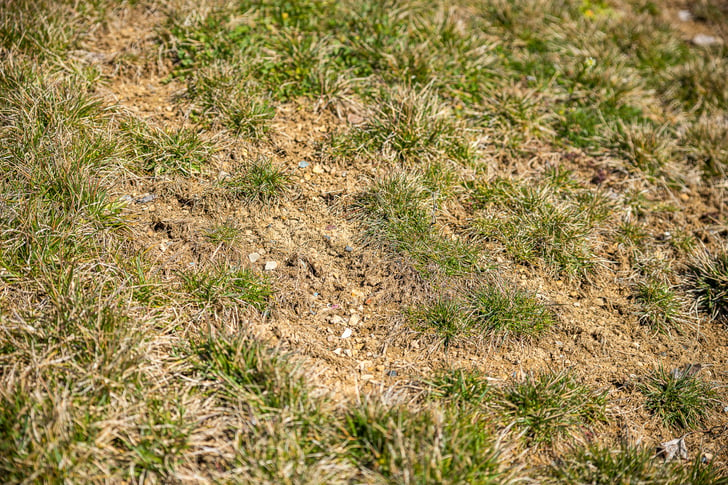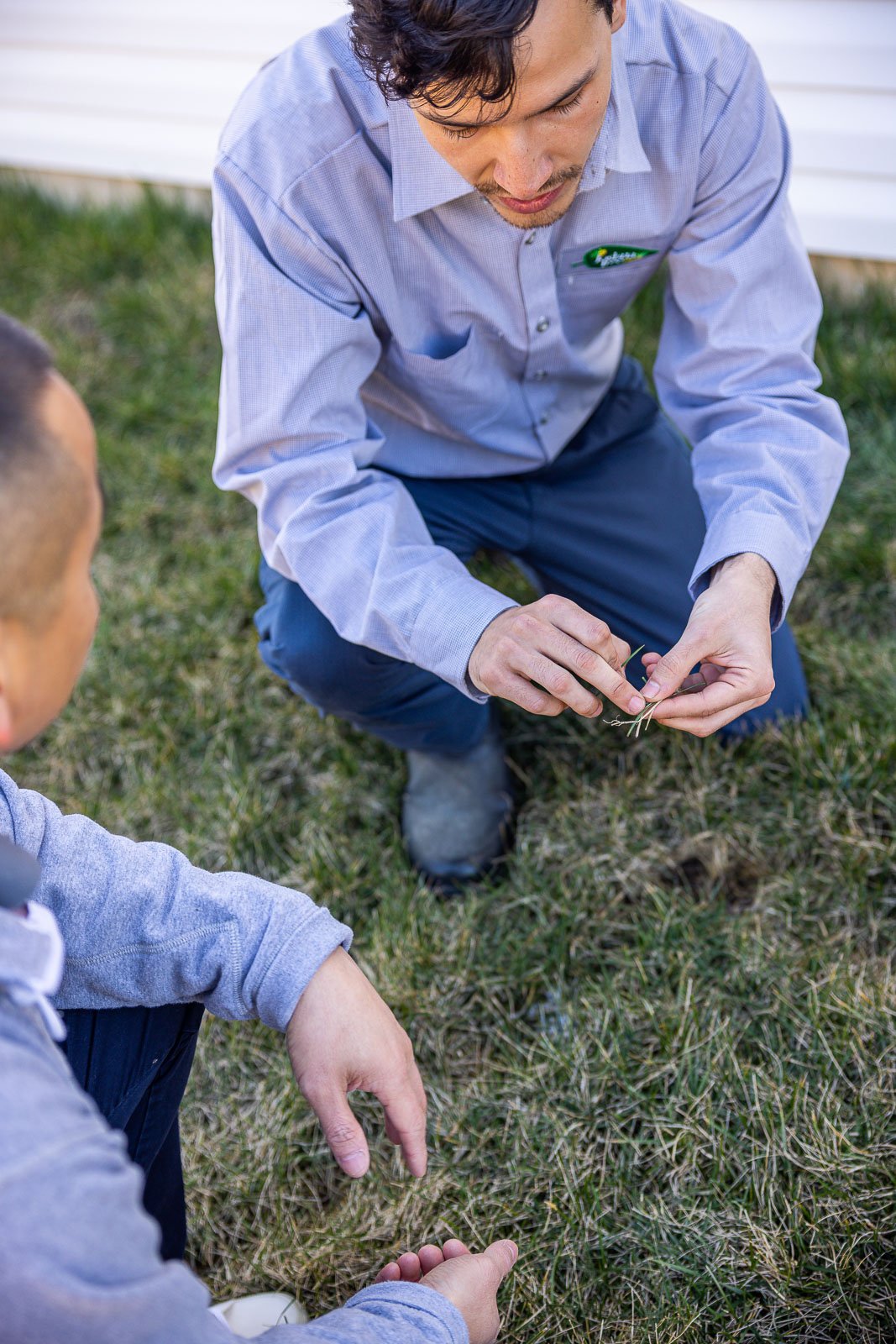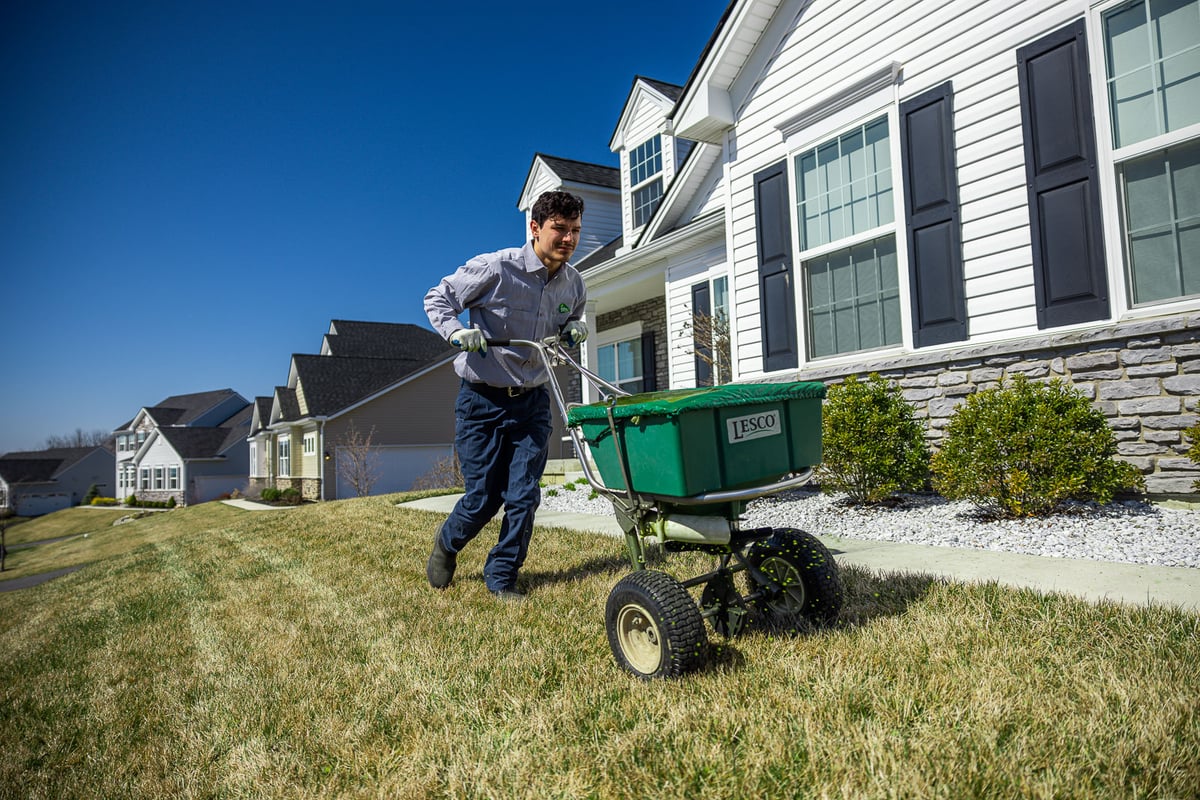The summer months can be hard on your lawn. Besides periods of drought, which can be tough for the lawn, there are also various lawn diseases that thrive during times of high heat and humidity.
There are various lawn diseases that can cause problems in the summer. Brown Patch lawn disease is a common one. As the name implies, this lawn disease causes brown spots (diseased areas) to pop up and spread throughout your lawn.
But brown spots could also be caused by Summer Patch. In this article, we’ll dive into what Summer Patch lawn disease is all about and how you can deal with it.
Does My Lawn Have Summer Patch Lawn Disease?
Summer Patch is caused by the fungus Magnaporthiopsis poae which attacks the roots of the lawn. For that reason, it’s not always noticeable right away (as the problem is beneath the surface).
Typically, the signs of a problem with Summer Patch start to appear later into the summer as the infected roots begin struggling to grow healthy grass (particularly during periods of drought).

Above the surface, Summer Patch lawn disease generally appears as crescent-shaped or circular spots on the lawn. They tend to be reddish/brown or tan and will eventually turn a light straw color.
Once you notice these spots, the damage beneath the surface has already been done.
How to Treat Summer Patch Lawn Disease
First and foremost, it’s important that you properly diagnose what’s going on. Since many lawn diseases (and other problems) can mimic one another, you want to make sure that you are treating the correct problem.
If it’s truly Summer Patch that you’re dealing with, then you might be looking for Summer Patch disease treatment ideas.
Treating Summer Patch should begin with better lawn care habits.
The goal is to reduce stressors and improve the root system. This includes things like reducing soil compaction and mowing properly. Summer Patch is often made worse by mowing the lawn too short.
Here are a few considerations.
Implement Lawn Aeration
Lawn aeration is the best way to deal with compacted soil. It will help to loosen the soil and improve your lawn’s root system.
Aerating the lawn will also help to reduce thatch which is known to contribute to Summer Patch problems.
Mow the Lawn Properly
As far as proper mowing, you want to mow your lawn to a height of 3.5 inches. This might mean you need to raise your mower blades. It’s not uncommon for homeowners to cut their lawns too short.
Though it’s obviously more work, it’s ideal to mow more often (as many as one to two times per week). This is because you should only cut one-third of the grass blades at a time. Anything more than that can be stressful for the lawn.
Water Properly, Too
Watering the lawn can also have an impact on lawn disease problems.
Since lawn fungus loves moisture, it’s important that you avoid overwatering and also water at the right times. Watering your lawn late in the day or at night leaves excess water to just sit on the lawn.
Instead, the best time to water is in the early morning, allowing ample time for everything to dry out before nighttime.
The stronger and healthier that your lawn is, the better it will be able to deal with problems.
Understanding Grass Types and Their Role in Lawn Disease
We also want to mention, in regard to how to treat Summer Patch lawn disease, that the grass species present in your lawn also play a critical role.
Certain grass types are going to be more susceptible to problems than others.

In the case of Summer Patch, annual bluegrass, Kentucky bluegrass, and fine fescues tend to be most susceptible to this disease.
But Turf Type Tall Fescue tends to be highly resistant.
At Joshua Tree Experts, we seed Tall Fescue because it is highly resistant to a variety of lawn diseases. We have also found that it is a grass type that performs well in our area and holds up to a variety of stressors.
This is why another great way of treating Summer Patch lawn disease is to continue adding better, disease-resistant grass to your lawn. This will not only fill in bare spots that might have been created by Summer Patch but will also introduce new grass that will be disease-resistant in the future.
A Lawn that Fights Back Against Disease
All lawns are subject to potential problems. But the healthier your lawn is from the start, the better it will be able to fight back when something like disease creeps in. If your lawn is already thin and struggling, it can easily be ravaged by a lawn disease.
The best way to grow a thick and healthy lawn is to invest in professional lawn care services. Services like lawn fertilization and weed control will help you to grow a thicker and healthier turf.

Of course, since many lawn diseases can be fast-moving (and might occur in between visits), we always recommend getting in touch with your lawn professional if you see something worrisome.
We know that you might be worrying - will my grass recover from Summer Patch? Fortunately, when we catch problems early, we can deal with them quickly.
Sometimes that does involve filling in bare spots that were formed. But at that time we can also overseed with new and better grass species that will be more disease-resistant going forward.
We know that lawn disease can be stressful, but we don’t want you to worry.
Here at Joshua Tree Experts, we want you to know that we’ve got your back. We’ll keep a close eye on your lawn and help you make the best possible decisions to help keep it in good health.
With the right care for your lawn, you’ll gain valuable peace of mind. If you’re interested in having your lawn inspected and its health assured, contact us for a free quote or give us a call at 833-JTE-TREE.
Header Image Source | Wikimedia




